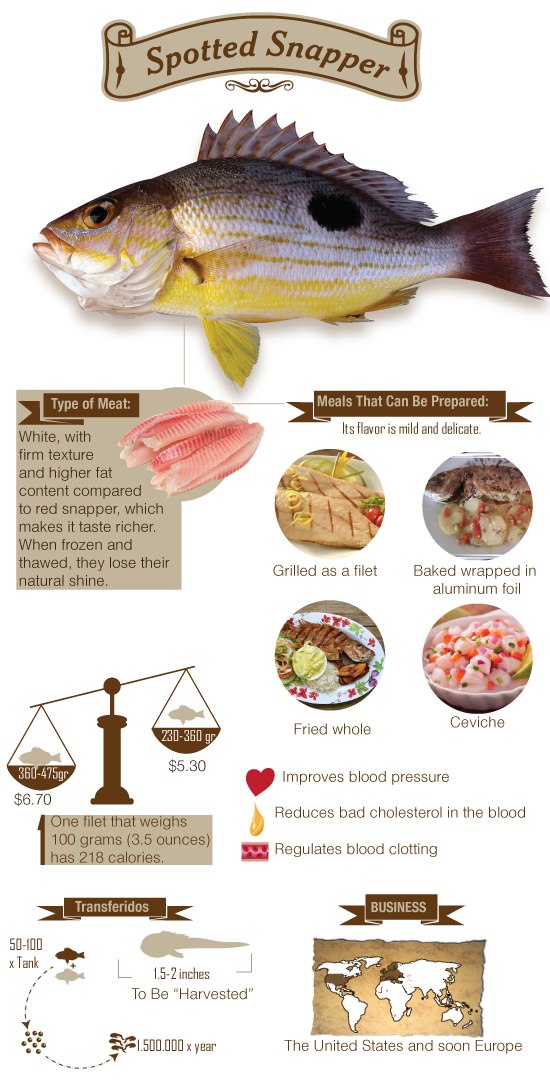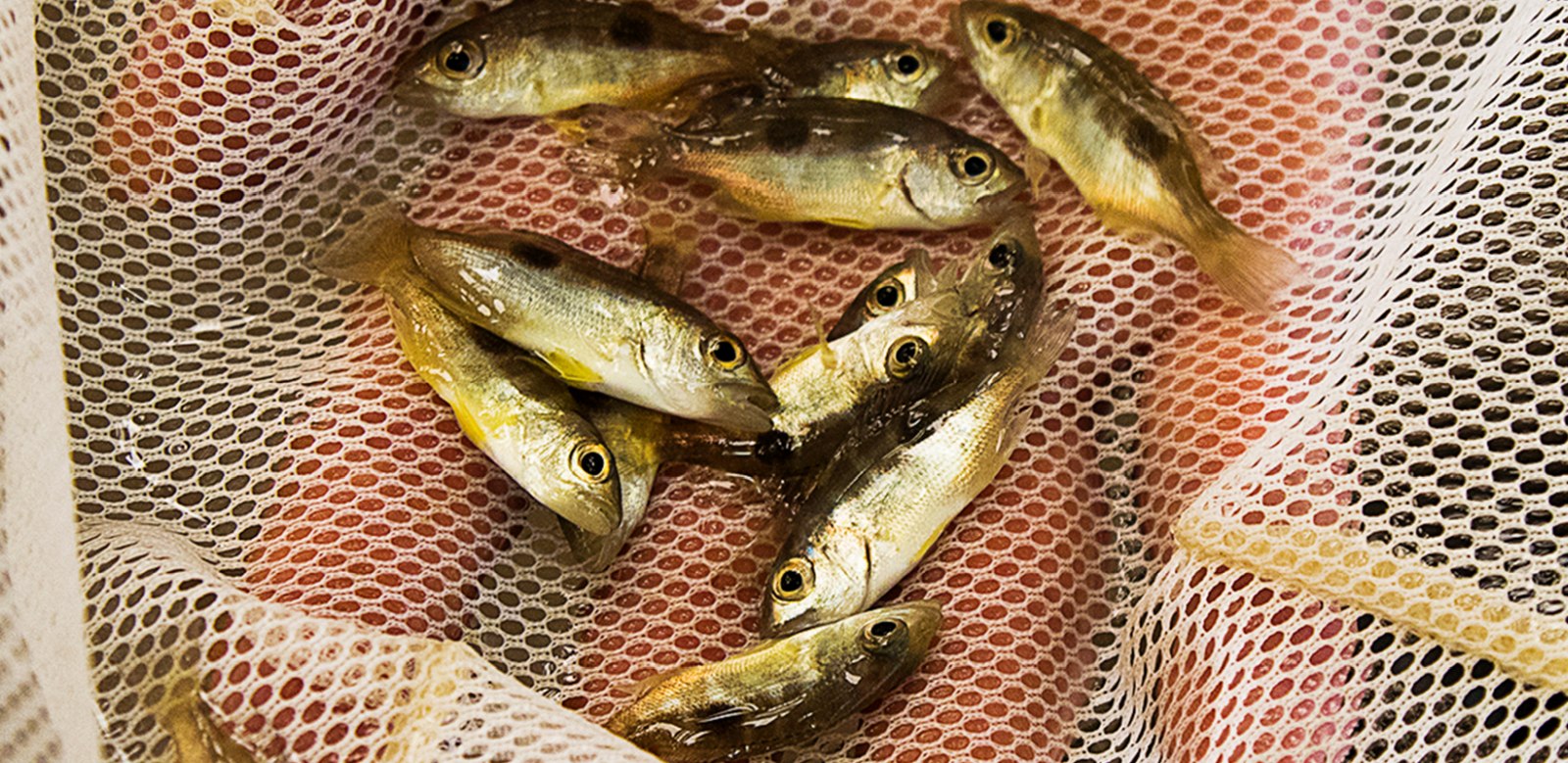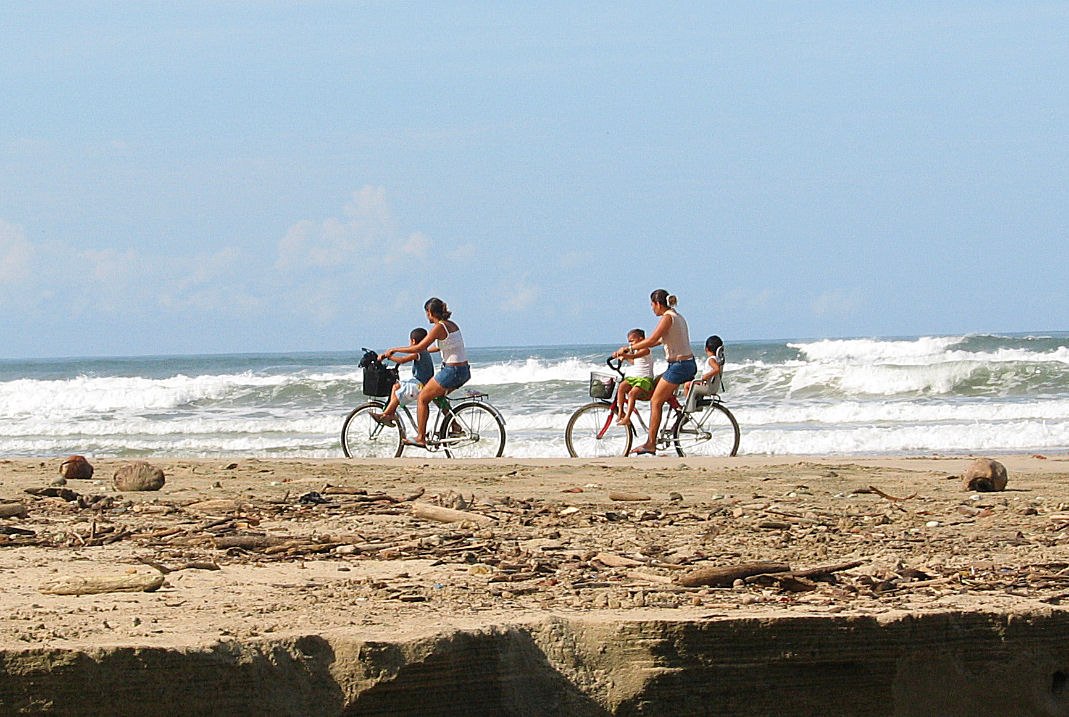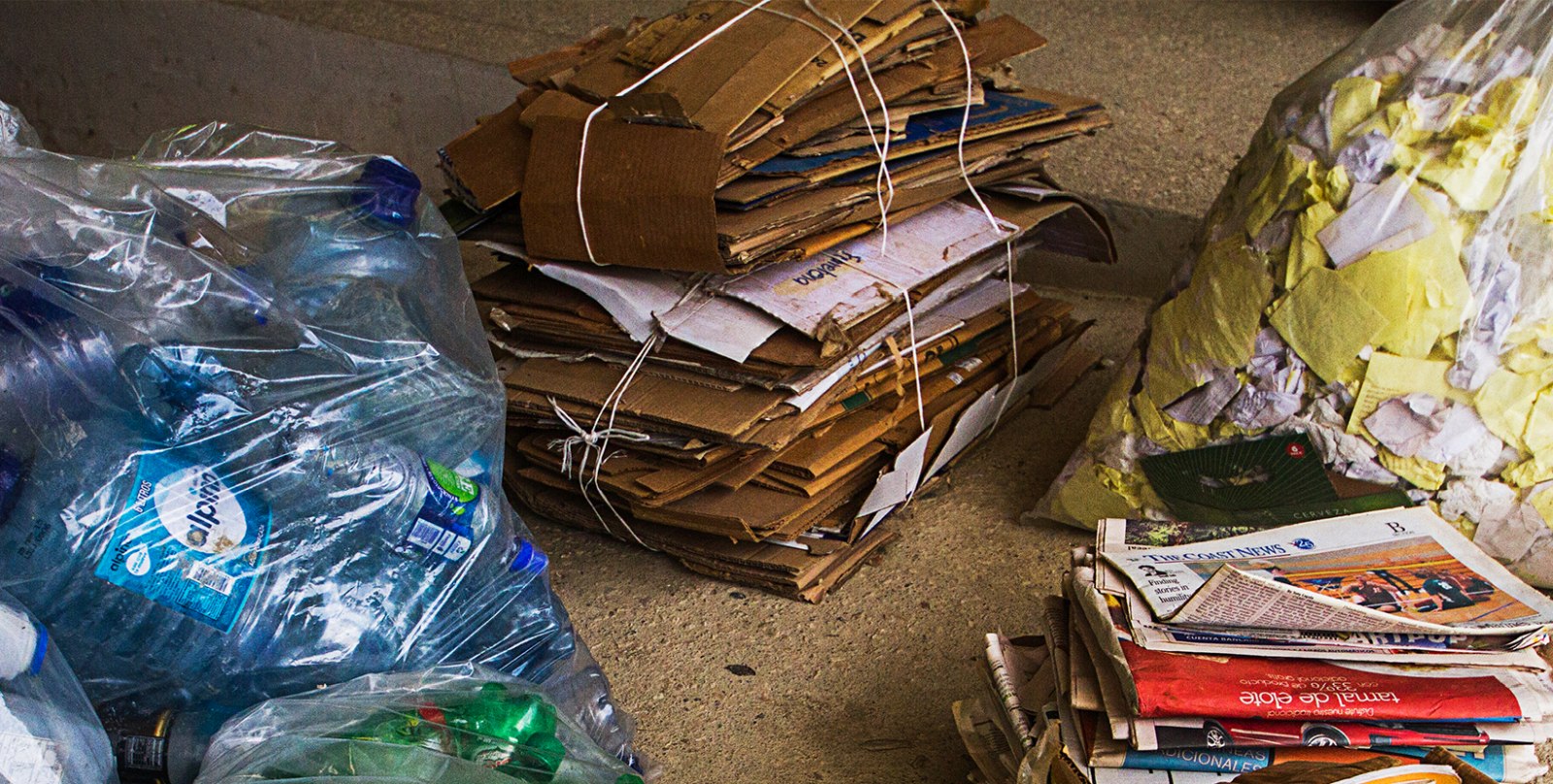
The fishing industry in Guanacaste has been in decline for several years, so alternatives for breeding and producing marine species in controlled environments are emerging as an option to keep up with the demand for fish and provide employment for local families.
The best known farm-raised fish is tilapia, and for seafood, it is shrimp, but in the district of Bejuco in Nandayure, a different species is being produced: the spotted snapper, whose meat is firmer than its more well-known “cousin,” the red snapper, and much more flavorful and natural than tilapia.
Moreover, it is the only spotted snapper farm in the country.

Artificial Sea on Land
The company Industrias Martec has been exporting fish from the country since 1984, but it was not until 2011 that it began operations in the community of Pilas in Bejuco, where it established a plant that specializes in the production of the olomina species, ie spotted snapper fry (baby fish).
In 2015, this breeding farm reproduced approximately 1,500,000 olominas, which were later transferred to the company’s main plant, located in Quepos, Puntarenas.
As its name implies, aquaculture is farming aquatic species in fresh or sea water. In the case of Martec, the water is taken directly from the sea by means of a pipeline that runs to a large pond, where it is then filtered and sterilized to prevent the future fish from getting sick.
The salt water that is discarded is thrown into the mangrove nearby the plant, which has helped to keep it alive, especially during the dry season. In addition, water leaving the plant is monitored by MINAE and SENASA.
Piero Benedetti, a marine biologist and manager of the plant in Bejuco, explained that breeding and commercial production of the spotted snapper requires specialized equipment with high standards of biosafety to preserve the health of the environment and of the fish.
“It is a costly process because we have to invest in special equipment like stainless steel pumps so the sea water does not damage them, in addition to the specialized personnel who know how to manipulate and understand the behavior of the fish,” he pointed out.
The plant in Bejuco employs 30 families from the canton of Nandayure. This type of year-round work is very difficult for traditional fishermen to obtain in the area, due to a general decline in fishing and the closed-season periods that are imposed to allow the natural reproduction of snapper at sea.
During 2016, the company hopes to increase production to 5 million fish and continue to stimulate aquaculture and employment in Guanacaste.
|
The reproduction stage occurs in tanks where the water temperature is between 30° and 32° C (86° and 90° F) and there are between 50 and 100 egg-producing fish. Then, larvae hatch from the eggs in incubators in the hatchery building. At this stage, their diet consists of microscopic remains of zooplankton, an organism composed of algae and other aquatic species. After three or four weeks, the “weaning” phase begins, when the little fish eat rotifer (marine microorganisms) and then brine shrimp, a kind of crustacean, and later food granules and vitamins. Finally, two months later, the fish are transferred to the fattening plant in Quepos, where they will remain for 10 months, and they are fed with protein and vitamins to reach their full size and weight, which is around 2 kilos (4.4 pounds). |







Comments